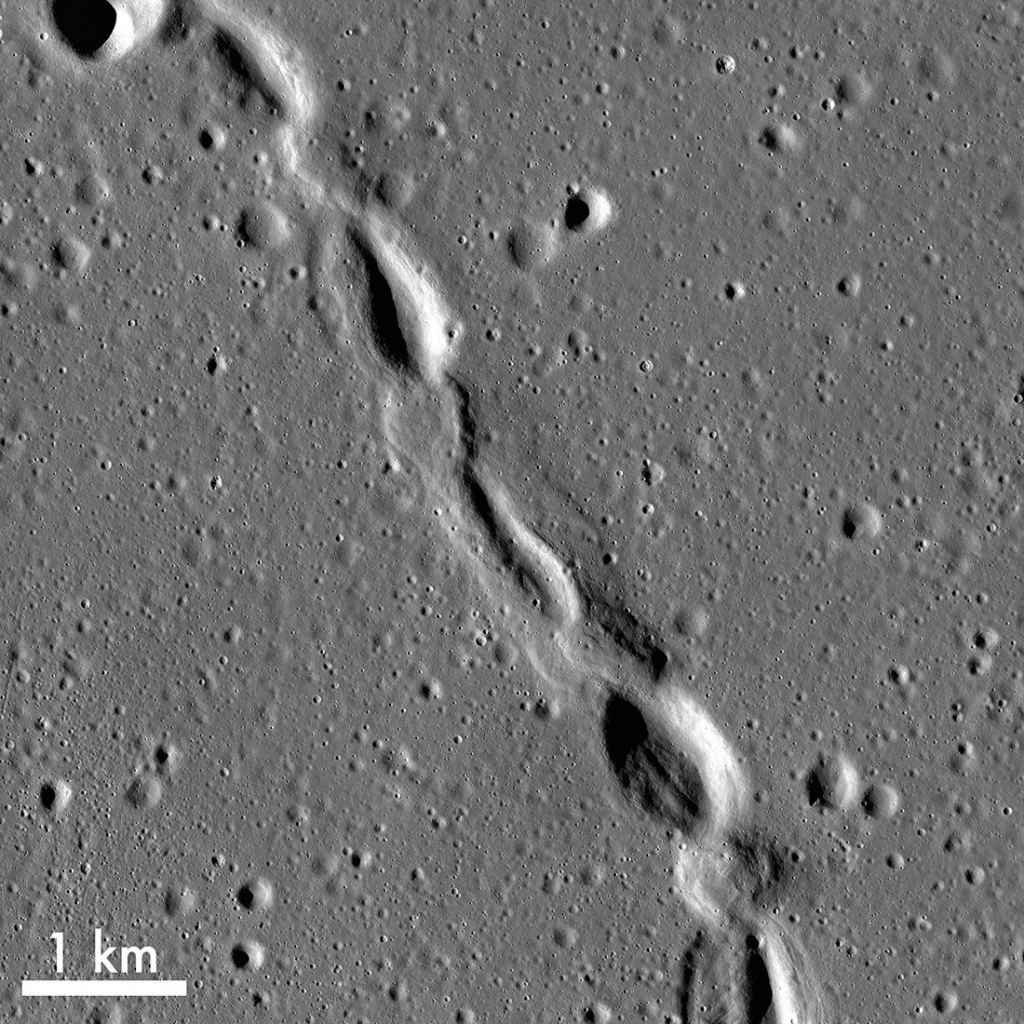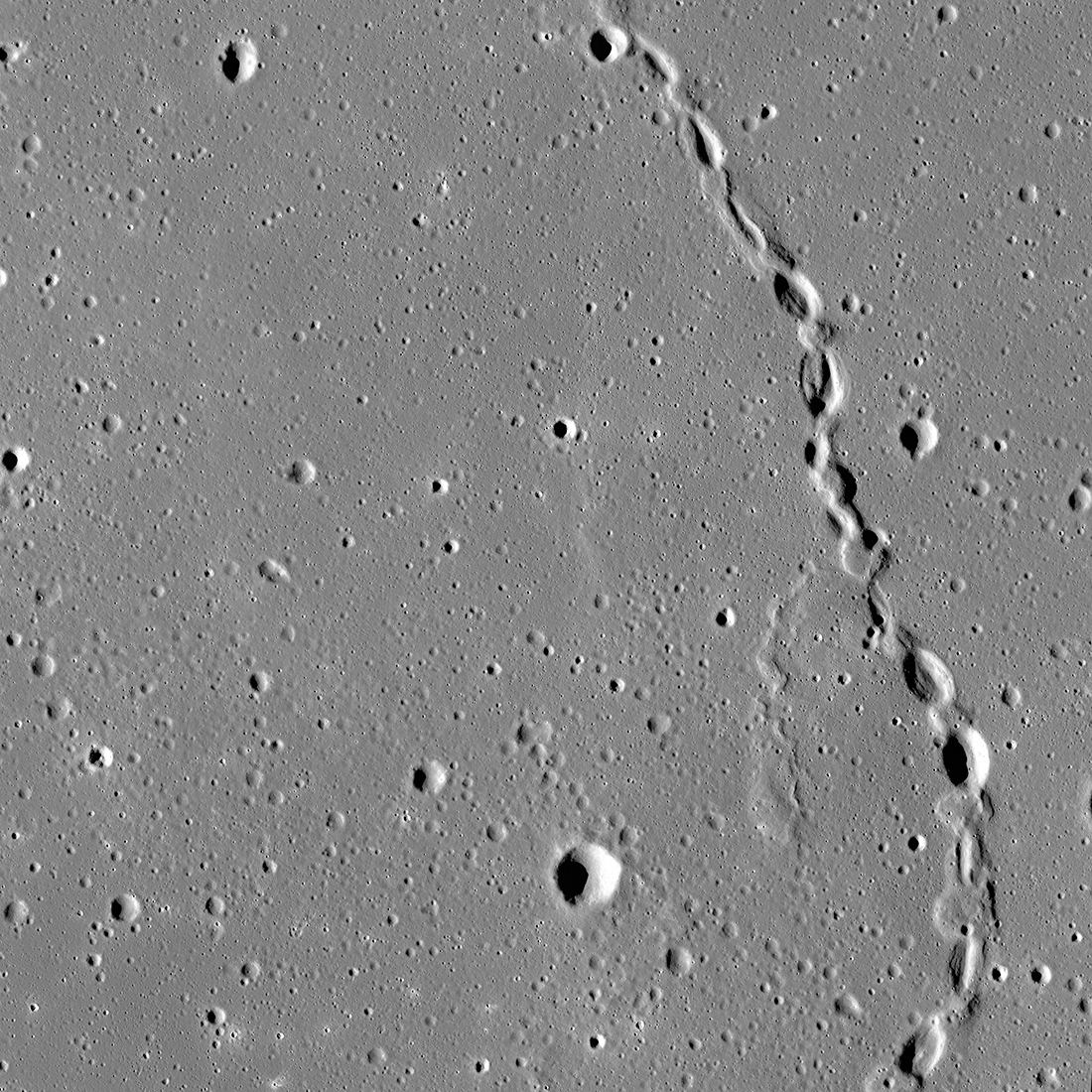The Moon was once a geologically active place characterized by volcanoes, lava flows, and a magnetic field generated by action in its interior. The Moon’s airless environment has perfectly preserved evidence of this past and can be seen today as dark deposits, volcanic domes, and cones. But the most recognizable features are known as “sinuous rilles,” which are believed to be ancient lava tubes that have since collapsed. The Lunar Reconnaissance Orbiter Camera (LROC) recently captured images of a rille that extended 48 km long (30 mi) across the northern hemisphere.
Lava tubes have been observed throughout the Solar System, including the Moon, Mars, and Mercury. Similar to lava tubes on Earth, these formed in the presence of volcanic eruptions, where flowing lava cooled and crusted on the surface. This crust insulated the flowing lava inside, allowing it to flow for great distances before solidifying. Over time, these tubes may collapse due to seismic activity or impact events, creating a chain of pits and holes (“skylights”) extending away from the volcanic features.

The continuous rille imaged by the LROC was found near the Gruithuisen K crater in Oceanus Procellarum (“Ocean of Storms”). This dark, flattened region is the largest mare (“sea”) on the Moon, which is why it is the only mare to be called an “ocean.” It covers 4 million square kilometers (1.5 million mi2), accounting for 10.5% of the Moon’s surface area. The large, irregularly shaped crater at the upper left side of the image could be the source of the lava flow that formed the rille, and scientists estimate that the tube could be up to 500 meters (1640 ft) in diameter in some places!
This supports previous research that indicated there could be lava tubes on the Moon measuring up to 10 kilometers (6.2 mi) in width and hundreds of kilometers in length – i.e., large enough to house entire cities. Other findings indicate that temperatures could be stable within these lava tubes, averaging around 17 °C (63 °F), whereas surface temperatures range from 127 °C (260 °F) during the day and -173 °C (-280 °F) at night. For these reasons and others, NASA, China, and other space agencies are considering stable lava tubes as potential sites for future lunar bases.
In addition to their spacious nature and room-temperature environments, these tubes would provide shielding against cosmic radiation, solar flares, and meteorite impacts. The sinuous chain of pits also has some interesting topography, including the usual collapsed pit structure and dips in elevation with no raised rims. However, in other places, there appear to be raised rims where collapsed pits should be, leading researchers to wonder if this is a classic lava tube or if there were other mechanics at work.
Further Reading: LROC

